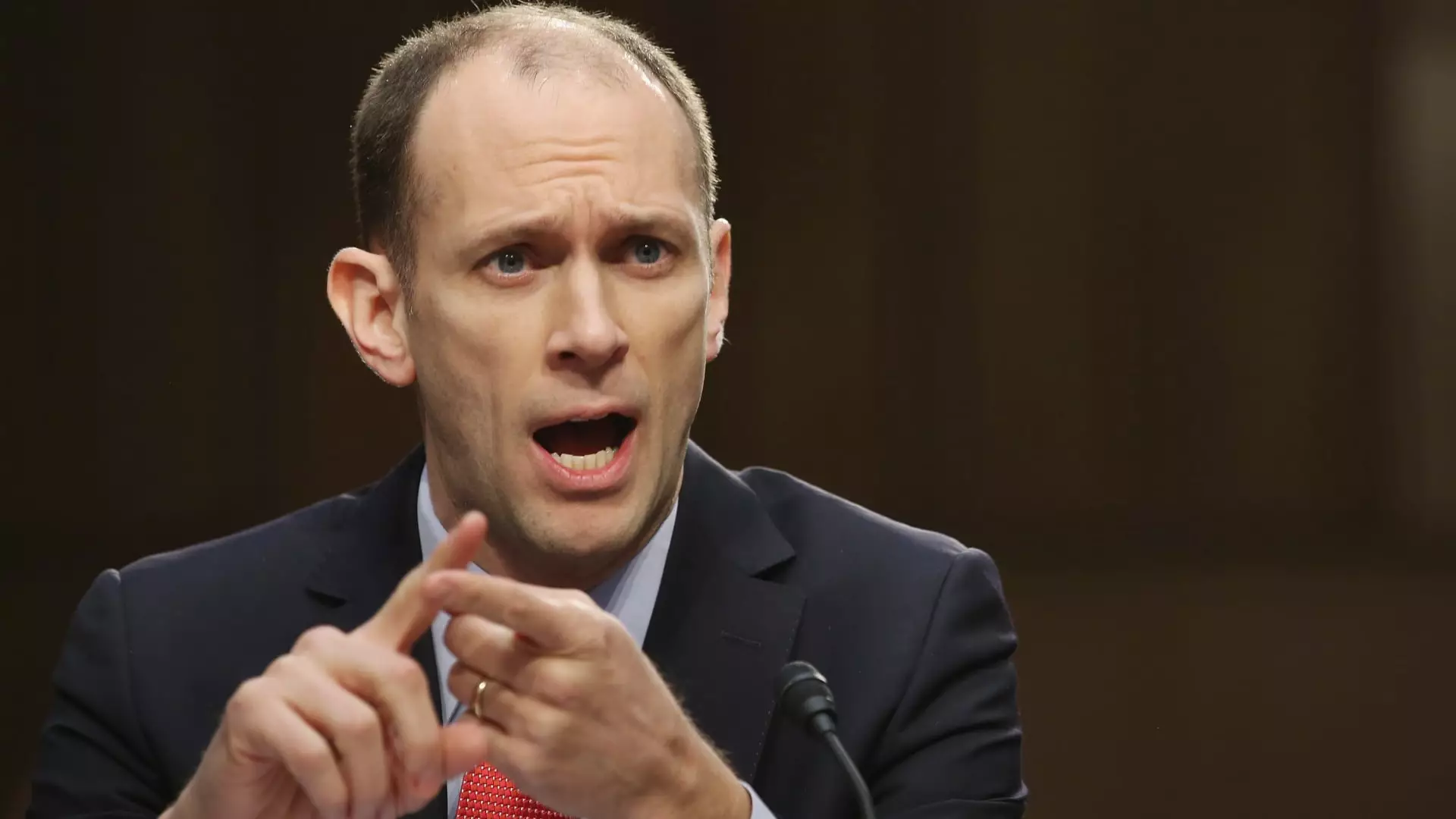In the constantly shifting landscape of U.S. economic policy, Chicago Federal Reserve President Austan Goolsbee recently expressed cautious optimism regarding potential interest rate cuts. However, there lies a complex web of uncertainties that cloud this seemingly straightforward proposition. Indeed, while Goolsbee’s sentiments reflect a liberal approach to monetary policy—pushing for growth while remaining alert to challenges—it’s crucial to explore why this optimism may ultimately be unfounded. The naivety surrounding the rate-cut expectation must be scrutinized against the harsh realities of economic indicators and global pressures.
The Dark Cloud of Tariffs
One major concern bringing anxieties to the forefront has been tariffs, particularly those enacted under former President Donald Trump. Goolsbee has noted an uptick in anxiety from business leaders who are pausing capital expenditures, waiting for clarity on how tariffs might affect their operational costs. It’s baffling to consider an economic recovery, or more optimistically, a period of growth, weighed down by such self-imposed constraints. When businesses hesitate to commit due to tariff ambiguities, it raises significant questions about the Fed’s ability to stimulate the economy effectively through any rate cuts.
The simple truth is: tariffs are not just economic policy; they are a poison pill that complicates the broader economic narrative. Instead of a proactive environment conducive to investment, businesses are faced with the specter of rising costs, potentially leading to a stagnation in growth—an area Goolsbee termed as having a “stagflationary impulse.” While his projections for future rate cuts seem heartening, they may ultimately serve as hollow proclamations if these tariff-induced pressures continue to throttle economic momentum.
Beyond the Data: Misleading Signals
In a recent statement, New York Fed President John Williams remarked on the rise of “mixed signals” in economic data, illuminating the challenges the Federal Reserve faces in assessing monetary policy direction. This mixed bag of information creates an environment where even the most enlightened economic minds struggle to tap into the true state of the economy. Despite low unemployment rates hovering around 4%, the whisper of inflation lingers throughout economic discussions, shrouded in uncertainty.
Should policymakers simply press ahead with rate cuts based on historical data that falsely paints a rosy picture? If Goolsbee’s expectation of rate reductions is built on tenuous grounds, then it risks misallocating resources and exacerbating underlying issues. Accepting an agenda of “lower rates for growth” without recognizing these economic headwinds borders on negligence, especially when inflation threatens to rear its ugly head amidst an unsustainable growth trajectory.
The Tug-of-War of Economic Policy
Central to this narrative is the Federal Open Market Committee’s (FOMC) retention of the fed funds rate between 4.25% and 4.5%, which has inevitably invited speculation regarding the future trajectory of interest rates. Perhaps the most alarming aspect in Goolsbee’s admissions is the acknowledged increase in “uncertainty,” which has seemingly become an echo throughout multiple speeches. By infusing their discussions with a sense of hesitation and vacillation, monetary policymakers seem increasingly disconnected from the realities that everyday Americans confront—higher prices and stagnant wages.
When public trust in the Federal Reserve wavers due to unclear messaging, it complicates the very role it seeks to play. The dichotomy between aggressive market expectations, which have priced in expectations for as many as three rate cuts, and the cautious approach of the Fed raises red flags. The question arises: How can any genuine economic recovery be forged when decision-makers appear to be patching together a policy framework that is inherently tentative?
Looking to the Future: A Call for Pragmatism
As the economy navigates turbulent waters, focusing on real solutions rather than on the superficial allure of rate cuts is essential. Instead of dancing around the effects of tariffs and uncertainties, we must confront the questions head-on. Navigating through uncertain economic terrain demands a pragmatic approach that seriously considers the long-term implications of monetary policy rather than elusive short-term fixes.
There’s an ethical responsibility on the shoulders of economists and policymakers alike to ground their decisions in the lived experiences of Americans. Growth, empowerment, and resilience can only come from substantive policies that inspire trust rather than those that are merely reactionary and ephemeral. In evaluating the future, it’s vital that policymakers strive for a strategy that strikes a balance between stimulating growth and safeguarding against underlying economic risks. Without such a vision, the ambition for rate cuts may lead the economy down a path that is fraught with peril, presenting more issues than it claims to resolve.

